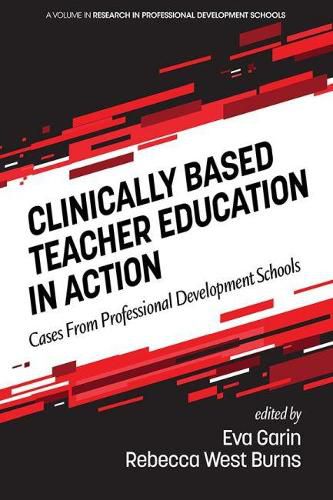Readings Newsletter
Become a Readings Member to make your shopping experience even easier.
Sign in or sign up for free!
You’re not far away from qualifying for FREE standard shipping within Australia
You’ve qualified for FREE standard shipping within Australia
The cart is loading…






This title is printed to order. This book may have been self-published. If so, we cannot guarantee the quality of the content. In the main most books will have gone through the editing process however some may not. We therefore suggest that you be aware of this before ordering this book. If in doubt check either the author or publisher’s details as we are unable to accept any returns unless they are faulty. Please contact us if you have any questions.
Teacher education in the United States is changing to meet new policy demands for centering clinical practice and developing robust school-university partnerships to better prepare high-quality teachers for tomorrow’s schools. PROFESSIONAL DEVELOPMENT SCHOOLS (PDSs) have recently been cited in national reports as exemplars of high-quality school-university partnerships in the clinical preparation of teachers. According to the National Association for Professional Development Schools, PDSs have Nine Essentials that distinguish them from other school-university collaborations. But even with that guidance, working across the boundaries of schools and universities remains messy, complex, and, quite frankly, hard. That’s why, perhaps, there is such diversity in school-university partnerships.
For the last thirty years, educators have been fascinated yet puzzled with how to build PDSs. Clinically Based Teacher Education in Action: Cases from PDSs addresses that perplexity by providing images of the possible in school-university collaboration. Each chapter closely examines one of the NAPDS Nine Essentials and then provides three cases from PDSs that target that particular essential. In this way, readers can see how different PDSs from across the globe are innovating to actualize that essential in PDS development. The editors provide commentary, addressing themes across the three cases. Each chapter ends with questions to start collaborative conversations and a field-based activity meant to propel your PDS work forward.
$9.00 standard shipping within Australia
FREE standard shipping within Australia for orders over $100.00
Express & International shipping calculated at checkout
This title is printed to order. This book may have been self-published. If so, we cannot guarantee the quality of the content. In the main most books will have gone through the editing process however some may not. We therefore suggest that you be aware of this before ordering this book. If in doubt check either the author or publisher’s details as we are unable to accept any returns unless they are faulty. Please contact us if you have any questions.
Teacher education in the United States is changing to meet new policy demands for centering clinical practice and developing robust school-university partnerships to better prepare high-quality teachers for tomorrow’s schools. PROFESSIONAL DEVELOPMENT SCHOOLS (PDSs) have recently been cited in national reports as exemplars of high-quality school-university partnerships in the clinical preparation of teachers. According to the National Association for Professional Development Schools, PDSs have Nine Essentials that distinguish them from other school-university collaborations. But even with that guidance, working across the boundaries of schools and universities remains messy, complex, and, quite frankly, hard. That’s why, perhaps, there is such diversity in school-university partnerships.
For the last thirty years, educators have been fascinated yet puzzled with how to build PDSs. Clinically Based Teacher Education in Action: Cases from PDSs addresses that perplexity by providing images of the possible in school-university collaboration. Each chapter closely examines one of the NAPDS Nine Essentials and then provides three cases from PDSs that target that particular essential. In this way, readers can see how different PDSs from across the globe are innovating to actualize that essential in PDS development. The editors provide commentary, addressing themes across the three cases. Each chapter ends with questions to start collaborative conversations and a field-based activity meant to propel your PDS work forward.